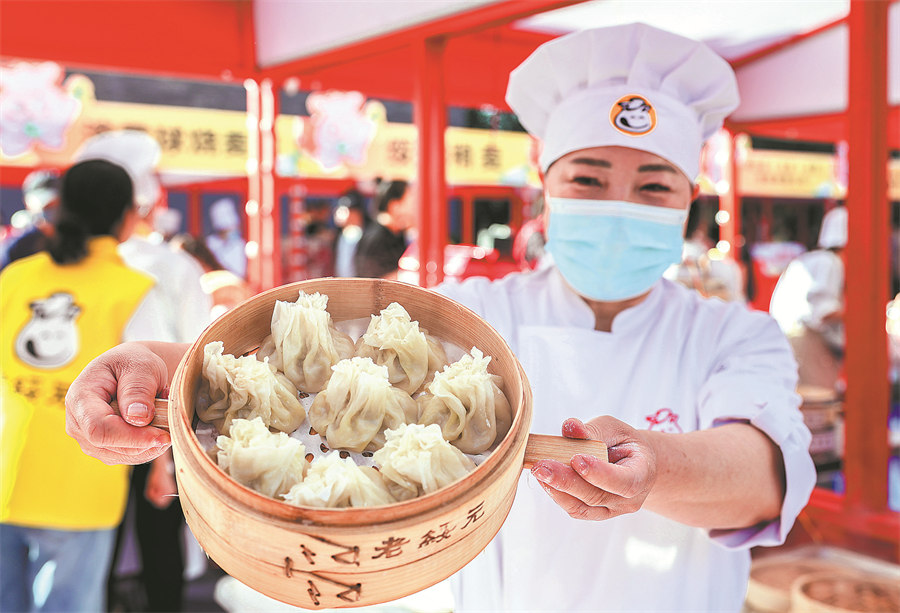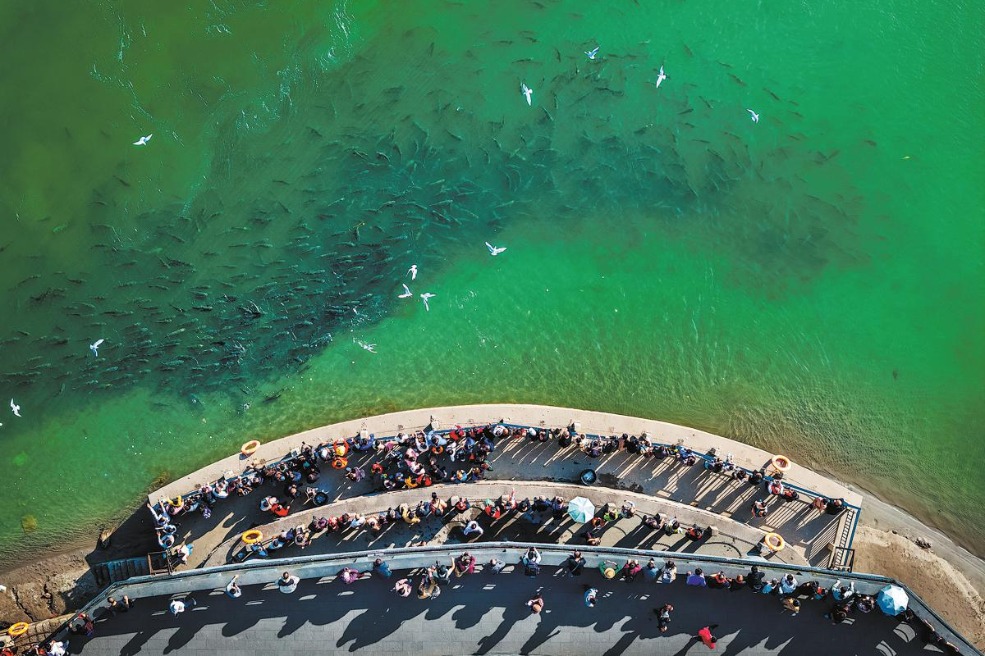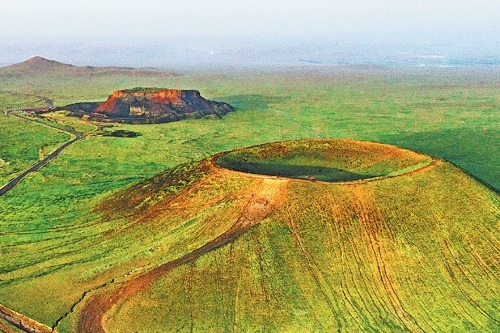Stories unfold under an azure canopy


He says the above-mentioned verse was originally a pastoral song in the Xianbei language that has been lost to time. It describes a scene of the undulating hilly grasslands, where Chile nomads herded, flourished by a kind of slender, white fluffy herbage that grew taller than regular grass. As herders rode galloping horses, the sheep and cows in the distance seemed to vanish and reappear amid the swaying grass rustling in the wind.
Today, a restored plain just 15 km from downtown Hohhot re-creates that vision. Set against the backdrop of the towering Daqing Mountains, part of the Yinshan range, this area has been developed since 2012 into a leisure retreat.
Visitors stroll, cycle and camp here, enjoying a pastoral interlude close to urban life.
The Chilechuan Grassland seeks to revive the memories that historically defined the land of Hohhot at the foot of the Yinshan Mountains: a former frontier of dynastic governance and the gradual integration of northern nomadic tribes into Chinese civilization — a subject Zhang has studied for decades.
About an hour and a half's drive from Hohhot — or some 400 km from Beijing — lies a well-preserved alpine meadow, the Khuitenshil Grassland in Ulaanqab's Qahar Right Wing Middle Banner, spanning the eastern slopes of the Daqing Mountains at an average elevation of 2,100 meters.
At its western end lies Huanghuagou (Yellow Flower Ravine), a 10-km stretch with a depth of 300 meters, popular with summer tourists.
Sightseeing trams shuttle through the grassland as wind turbines spin in the distance. Animals graze, undisturbed by the intermittent grass waves in the wind or the fleeting shadows of the passing clouds.
Close by, wildflowers burst into view — white, yellow, pink, blue and purple — some tall and proud, others tiny and delicate, dancing in the breeze.
Wang Ning, a local official who frequently visits the Huanghuagou Grassland Tourism Resort for work, says each time he comes, the meadow presents a fresh palette, with the colors vying for dominance over time, unable to wait even for a week.
According to him, the tourist resort received 4.26 million visitors last year, generating a revenue of 1.92 billion yuan ($267.7 million), both marking a 29 percent increase year-on-year.
The cycles of growth and decay on the grasslands have taught locals a deep respect for transience and endurance. Wherever stones are plentiful, people stack prayer cairns. On exposed hillsides, Tibetan Buddhist images and inscriptions emerge from massive boulders.
























